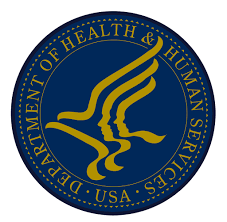Strategic Readiness Assessment and Plan for the U.S. Department of Health and Human Services

The U.S. Department of Health and Human Services (HHS) plays an essential role in guaranteeing the health and well-being of the American populace. Spanning multiple states and overseeing various healthcare initiatives, HHS faces the critical task of preparing for the evolving healthcare landscape of the next decade. This essay assesses HHS’s readiness and proposes a strategic plan to meet the healthcare needs of citizens in the coming years.
Description of the Health Care Organization or Network (U.S. Department of Health and Human Services)
The U.S. Department of Health and Human Services is a federal agency responsible for safeguarding and enhancing the health and well-being of Americans. Health and Human Services encompasses numerous agencies, including the Centers for Medicare & Medicaid Services (CMS), the Food and Drug Administration (FDA), and the Centers for Disease Control and Prevention (CDC). It provides healthcare services, health policy development, and research across the United States.
Overall Readiness Assessment
To evaluate Health and Human Services’s readiness, an inclusive analysis was conducted across key areas:
- Network Growth:
– Findings: HHS has a robust presence across states, but variations in resource allocation exist, with some regions being better served than others.
– Readiness: The organization is prepared for network growth but needs to address resource disparities to ensure equitable access to healthcare services.
- Nurse Staffing:
– Findings: HHS faces challenges in nurse staffing, with shortages in certain regions and healthcare specialties, leading to increased workloads and potential burnout.
– Readiness: The organization needs to focus on strategies to recruit, retain, and train nursing staff to address shortages and ensure quality patient care.
- Resource Management:
– Findings: Resource allocation practices are generally efficient, but improvements can be made in budget optimization, technology investment, and disaster preparedness.
– Readiness: HHS is prepared for resource management but must improve its ability to allocate resources effectively and adapt to unforeseen challenges.
- Patient Satisfaction:
– Findings: Patient satisfaction levels vary among different HHS agencies and programs, indicating the need for standardization and quality improvement.
– Readiness: The organization needs to prioritize patient satisfaction across all its agencies and programs to improve healthcare delivery.
Strategic Plan
To address the identified issues, a strategic plan is proposed:
- Network Growth:
– Objective: Confirm equitable access to healthcare services.
– Strategies:
- Conduct a comprehensive resource assessment to identify underserved regions.
- Develop a resource allocation model that prioritizes areas with the greatest need.
- Establish partnerships with local healthcare providers and community organizations.
- Nurse Staffing:
– Objective: Address nurse staffing shortages and enhance workforce development.
– Strategies:
- Implement targeted recruitment campaigns in areas with shortages.
- Offer financial incentives and scholarships to attract nursing talent.
- Invest in ongoing training and professional development programs.
- Resource Management:
– Objective: Optimize resource allocation and enhance preparedness.
– Strategies:
- Implement a data-driven resource allocation model.
- Increase investments in health information technology to improve data management.
- Develop and test disaster response plans.
- Patient Satisfaction:
– Objective: Standardize and enhance patient satisfaction across HHS programs.
– Strategies:
- Develop standardized patient care protocols and quality standards.
- Implement consistent patient feedback mechanisms.
- Provide staff training on patient-centered care and communication.
Organizational Culture
Current or potential issues within HHS’s organizational culture may affect the strategic plan’s implementation. These issues include bureaucratic complexities, hierarchical communication structures, and variations in leadership styles across different agencies and programs. Such cultural issues can impact employee engagement, collaboration, and change adaptation. To mitigate these challenges, HHS should foster a culture of transparency, innovation, and cross-agency collaboration. Leadership should prioritize open communication and inclusivity to enhance teamwork and facilitate change management.
Theory or Model for Implementation
The “ADKAR Change Management Model” is proposed to support the strategic plan’s implementation. This model focuses on individual and organizational change and aligns with the complex, multifaceted nature of HHS’s operations. ADKAR stands for Awareness, Desire, Knowledge, Ability, and Reinforcement, representing the five key elements needed for successful change. This model emphasizes the importance of addressing both individual and organizational barriers to change, aligning with the transformation required by HHS to meet the healthcare needs of citizens in the next decade.
Conclusion
AS A VITAL FEDERAL AGENCY, the U.S. Department of Health and Human Services must be prepared to address the evolving healthcare landscape of the next decade. A comprehensive readiness assessment has highlighted the organization’s strengths and areas requiring attention. The proposed strategic plan focuses on network growth, nurse staffing, resource management, and patient satisfaction, all crucial aspects of delivering high-quality healthcare services. Addressing organizational culture issues and implementing the ADKAR Change Management Model will facilitate successful plan execution. By prioritizing these initiatives, HHS can enhance its readiness and better serve the healthcare needs of American citizens in the years to come.
References:
ASPE. (n.d.). U.S. Department of Health and Human Services Strategic Plan – FY 2007-2012. [online] Available at: https://aspe.hhs.gov/us-department-health-human-services-strategic-plan-fy-2007-2012.
Evaluation (ASPE), A.S. for P. and (2021). Introduction: About Health and Human Services. [online] HHS.gov. Available at: https://www.hhs.gov/about/strategic-plan/2022-2026/introduction/index.html.
www.performance.gov. (n.d.). U.S. Department of Health & Human Services. [online] Available at: https://www.performance.gov/agencies/hhs/





